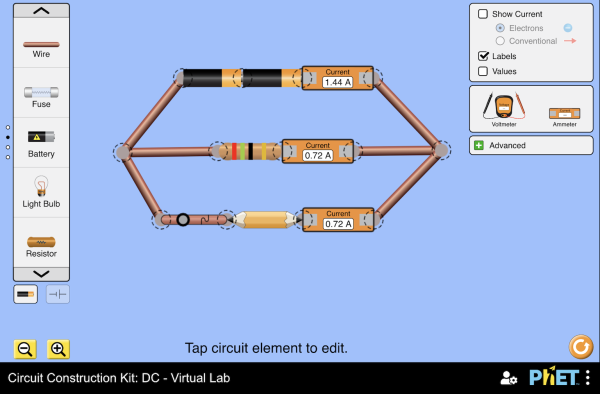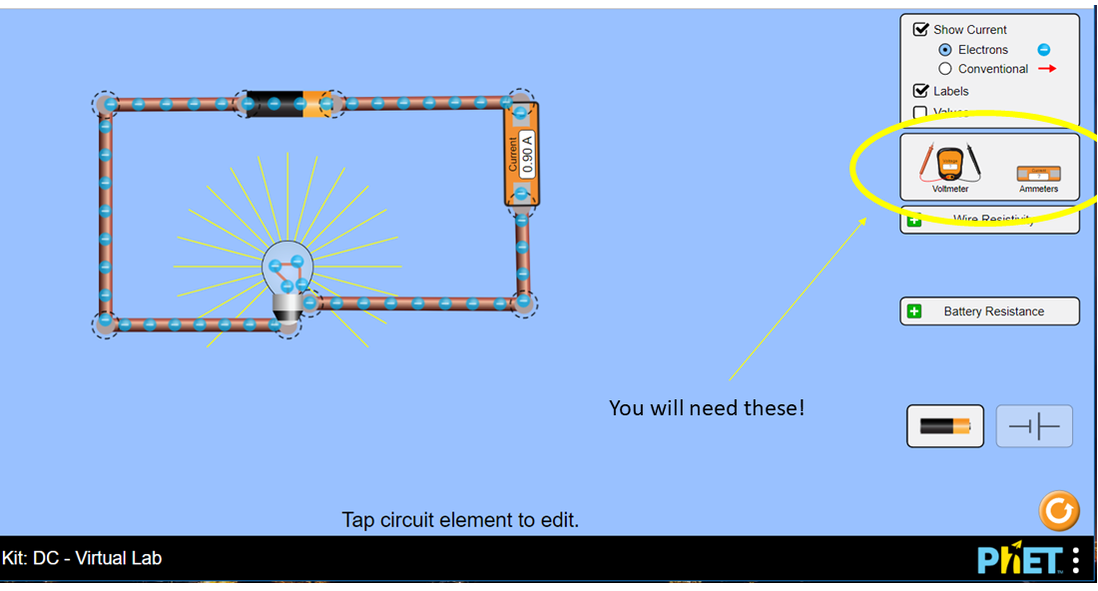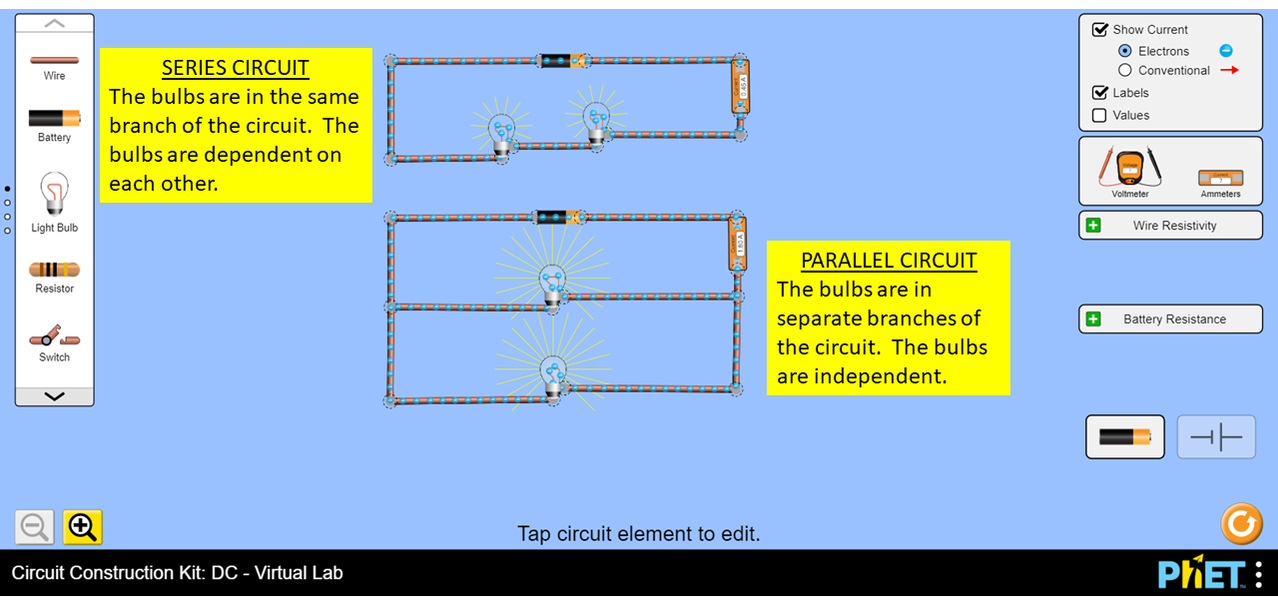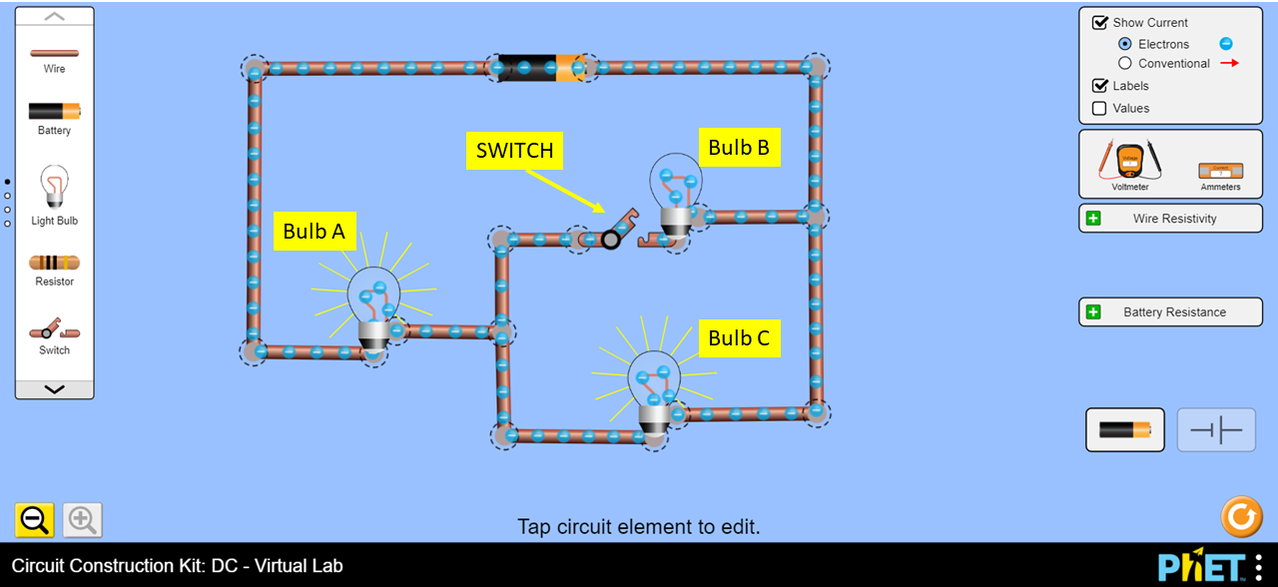A - Circuits Lab
The simulation below allows you to experiment with different circuits. You will need the ammeter and voltmeter options on the right. When building more complicated circuits it helps to zoom out a bit, which makes the components smaller. Run the simulation (works on iPad as well as your laptop) to become familiar with the controls. The tasks are outlined below.
Start a word document or google doc. For each of these tasks you can write about what you have learned and include data tables and graphs as appropriate.
Experiment 1 - Changing the Voltage
Build a simple circuit with a battery, bulb and an ammeter. The ammeter measures the current, which is the flow of the electrons around the circuit. The higher the current, the greater the number of electrons flowing through the bulb every second and the brighter it gets. You can use the voltmeter to measure the voltage of the battery. Add more batteries and record the current and voltage in a table. (you could record the number of batteries instead of voltage but the voltage is more sciency). Get at least 5 sets of data and plot a graph. Don't forget to label the axes and paste both the data table and graph into your document. Write down what you found out from this first experiment.
Experiment 1 - Changing the Voltage
Build a simple circuit with a battery, bulb and an ammeter. The ammeter measures the current, which is the flow of the electrons around the circuit. The higher the current, the greater the number of electrons flowing through the bulb every second and the brighter it gets. You can use the voltmeter to measure the voltage of the battery. Add more batteries and record the current and voltage in a table. (you could record the number of batteries instead of voltage but the voltage is more sciency). Get at least 5 sets of data and plot a graph. Don't forget to label the axes and paste both the data table and graph into your document. Write down what you found out from this first experiment.
Voltage (V) |
Current (A) |
?? |
?? |
?? |
?? |
Experiment 2 - Series and Parallel Circuits
Shown below is a screenshot from a series circuit (top) and a parallel circuit (bottom). Here I have just used two bulbs, but you can as many as you want within reason. Two are easier!
a) Compare the brightness of the bulbs. Can you explain the difference in terms of the voltage and/or current?
b) Add ammeters to other places in the circuit and see if the readings match your theory.
Write the answers to the above questions in your document - include screenshots if that helps. You could add text boxes to highlight your thoughts.
Shown below is a screenshot from a series circuit (top) and a parallel circuit (bottom). Here I have just used two bulbs, but you can as many as you want within reason. Two are easier!
a) Compare the brightness of the bulbs. Can you explain the difference in terms of the voltage and/or current?
b) Add ammeters to other places in the circuit and see if the readings match your theory.
Write the answers to the above questions in your document - include screenshots if that helps. You could add text boxes to highlight your thoughts.
Experiment 3 - More Complex Circuits (advanced)
Using three bulbs and a switch build the following circuit and see what happens when the switch is opened and closed. Use the voltmeter, ammeter and imagery of the flowing electrons to see if you can figure it out. Can you explain what happens and why in your own words/diagrams?
Using three bulbs and a switch build the following circuit and see what happens when the switch is opened and closed. Use the voltmeter, ammeter and imagery of the flowing electrons to see if you can figure it out. Can you explain what happens and why in your own words/diagrams?



